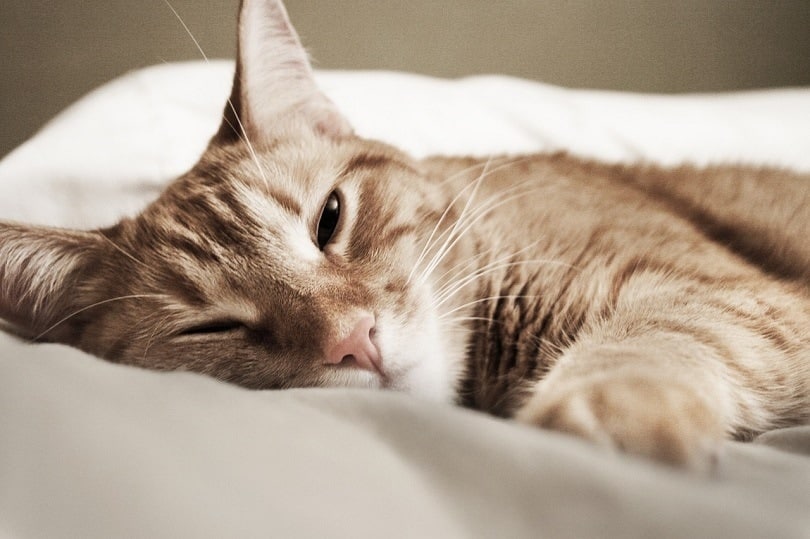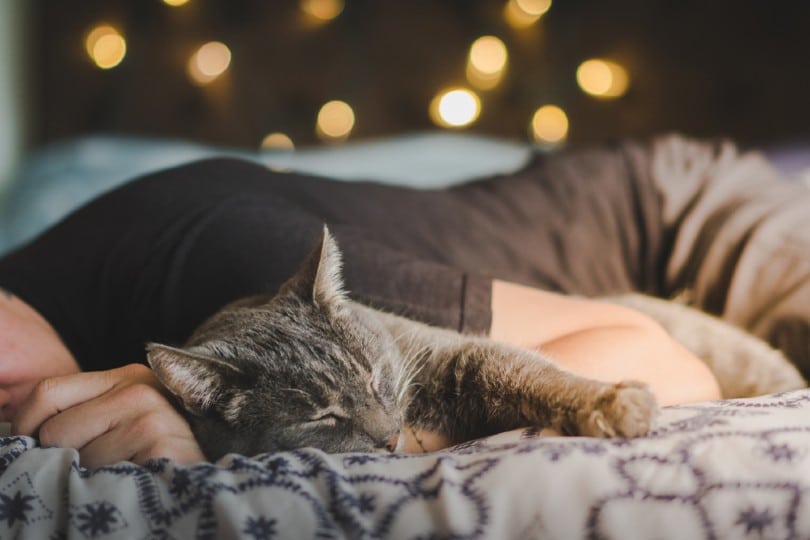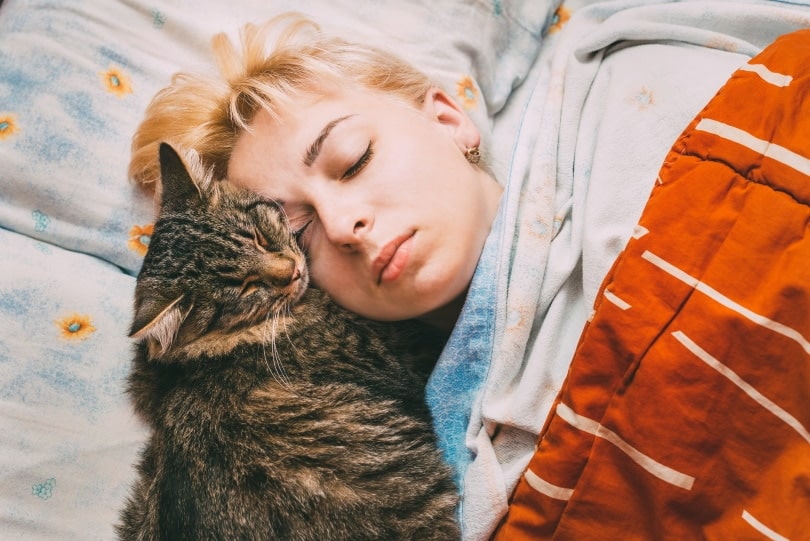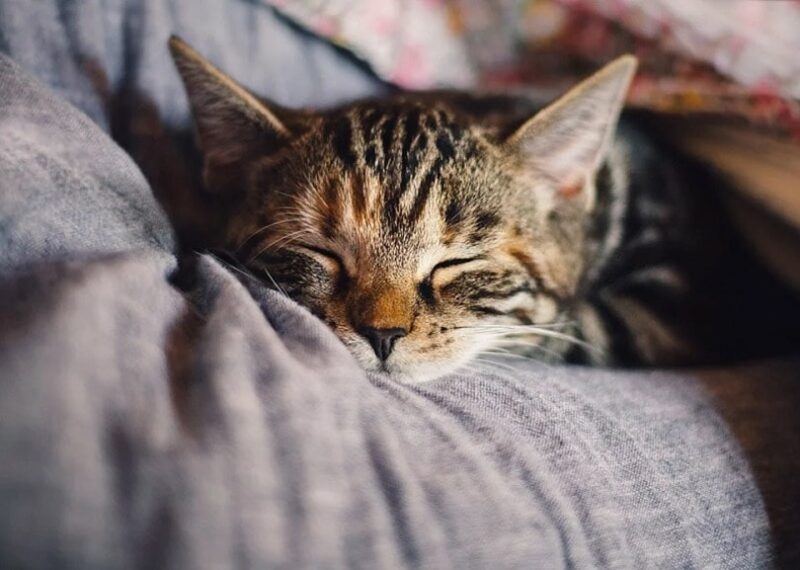Cats are the queens and kings of sleep. They spend an average of 15 hours a day sleeping and sometimes as much as 20 hours! That means for those particular sleepyheads, they might only be awake about 4 hours every day. So, with all that sleeping, you might be wondering where their favorite spots are to sleep. Do they enjoy sleeping on pillows?
Cats absolutely love to sleep on pillows! But not all cats will seek pillows out and might prefer their cat tree or your soft, down comforter.
Here, we discuss why cats might opt to sleep on your pillow and why and how you should prevent it.
Pillow Sleepers
Many pet owners enjoy sharing their beds with their pets. A study found that 65% of pet owners shared a bed with their pets, and 23% of cat owners shared their pillows.1 The top feeling that owners had regarding sharing their beds was feeling loved, followed by being more comfortable.
Clearly, many of us who are lucky enough to have cats in our lives greatly benefit from this relationship. So, let’s take a deeper look at why our cats love to share our pillows.

Warmth
We know how much cats love to get all warm and cozy. Bundling under soft blankets or stretching out in a patch of sunlight, cats seek out warmth wherever they can. A cat’s regular body temperature sits between 100.4°F and 102.5°F (38°C to 39.1°C). The thermoneutral zone for domestic cats is 86 to 100.4°F (30 to 38°C).
Since cats love a warm space, it’s no wonder that they enjoy pillows, which are warm and cozy, particularly when your head is on it or has recently vacated it.
Affection
You might have noticed that your cat seems to enjoy nuzzling your head and face and giving you head bumps while purring. Your pillow is a great place to get in a good cuddle session, with perhaps a bit of kneading and even a grooming session. Our cats also seem to enjoy licking and biting our hair! Our pillows smell strongly of us, so there’s a certain level of security and comfort there.

Security
If you’re not at home, the pillow will smell of you and can be a source of comfort if your cat is feeling stressed or anxious. Even better, if you’re still on the pillow, your cat can come to you for a bit of protection.
If your kitty isn’t cuddling up to you but is turned away from you with their tail in your face, it’s also possible your cat is on guard duty. Cats can be protective of those they love, so take it as a sign that your cat loves you and wants to take care of you.
Territory
Cats enjoy being the boss of the household. They might sometimes show this by sleeping next to your head, particularly if there are other cats in the home. Snagging the space by your head on your pillow versus down by your feet showcases that they are the top cat.
Also, they claim their territory by marking it with their scent. Sleeping on your pillow or even on your face is a way for your cat to claim you.

Should You Stop Your Cat From Sleeping on Your Pillow?
The choice is ultimately up to you, but there are reasons that having your cat sleep on your pillow is not the best idea. Ideally, it creates bonding time, and it can be rather comforting to cuddle up with your soft and fluffy kitty. However, cats are relatively active at night, particularly at dawn, so you’re risking interrupted sleep, which isn’t great for your health, let alone your working life.
There’s also the unhygienic component. Cats dig around in their poop- and urine-filled litter, and they tend to carry around litter on their paws. So, this means you might end up with this litter on your own pillow!
Best Ways to Get Your Cat Off Your Pillow
The most obvious answer here is to keep your bedroom door closed, but there are other options if this isn’t possible.
- If you can close your door but don’t want your cat to scratch at it, you can place tape or foil along the bottom and sides of the door or on the floor in front of it. Of course, this won’t stop your cat from yowling.
- Get your cat their own cushion or sleeping pad and make it as appealing as possible. Consider adding a heating pad or placing it near a heater or vent, which should draw your cat to it.
- Play with your cat before bed. This gives you bonding time and can help tire your cat out.
- Just be firm. When your cat comes onto your pillow, say no firmly yet gently guide your cat away from it. Your cat will just keep going onto your pillow if you allow it.
Conclusion
Now you have a much better idea of why your cat sleeps on your pillow. Warmth, love, and security are all potential motives as to why your pillow is such an attraction.
For the most part, it isn’t a big deal if your cat loves sharing your bed. The choice is yours. If you love it when your cat joins you on your pillow, feel free to continue to allow it. After all, it can be a lovely bonding experience, particularly if your cat is new to the family or just a cuddle bug.
- See also: What Is Cat Nuzzling?
Featured Image Credit: KatinkavomWolfenmond, Pixabay














